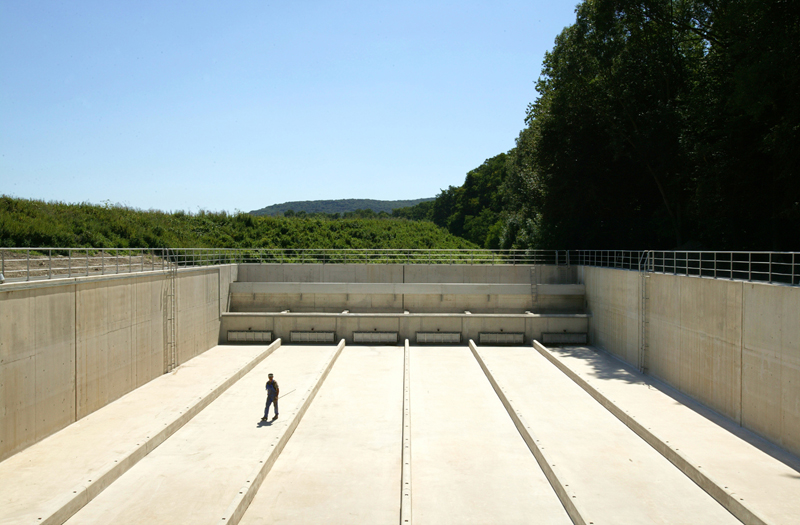Storm water treatment
The quantity of storm water to be discharged together with waste water in a combined sewage system is many times higher than the average discharge in dry weather. In order to avoid large canal cross-sections and peak loads, and particularly in order to ensure the efficiency of sewage treatment plants, storm water overflows and rainwater treatment facilities are built at suitable locations in the sewer network.
While peak discharge resulting from rainfall used to be channelled directly into the rivers, today’s peak run-off is stored temporarily in storm water overflow tanks, sewers with storage capacity and overflow, or storm water retention tanks within a city’s sewer network and is delivered to the sewage treatment plant with a certain delay. Only during extremely heavy precipitation with full storage reservoirs will a part of the combined sewage enter the body of water.
The Ruhrverband as an association took care of rainwater treatment in 1981. This task that used to be fulfilled by the individual municipalities can since be dealt with at a supra-regional level by the Ruhrverband, ensuring technical know-how and economic efficiency.









